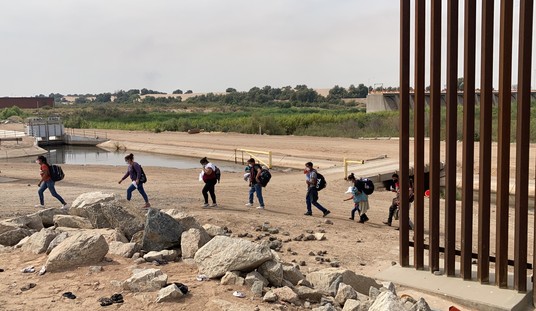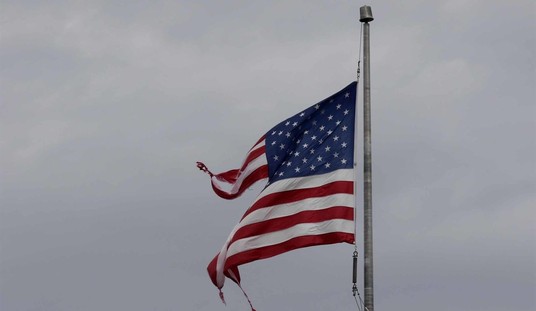https://www.youtube.com/watch?v=Kgvakdb-gBM
The Islamic State has now destroyed numerous ancient Assyrian artifacts in the Mosul museum and bulldozed the 3,300-year-old city of Nimrud and the 2,000-year-old city of Hatra. It also recently blew up a tenth-century Chaldean Catholic church north of Mosul.
The world has recoiled in horror at this new confirmation of the Muslim group’s gleeful contempt for civilization and embrace of barbarism, and the “this has nothing to do with Islam” industry has cranked into high gear to reassure the public yet again that nothing more than complacency is required in the face of this, but once again, the Islamic State is simply acting in accord with its stated principles.
Many have scoffed at the Islamic State’s claim that they’re simply removing temptations to idolatry. Who, after all, would be tempted to worship a 3,000-year-old Assyrian statue of a horse? But there is more to the Islamic State’s actions than just that. Besides removing supposed temptations to idolatry, Islamic jihadists want to ruin the artifacts of non-Muslim civilizations because doing so testifies to the truth of Islam, as the Qur’an suggests that ruins are a sign of Allah’s punishment of those who rejected his truth:
Many were the Ways of Life that have passed away before you: travel through the earth, and see what was the end of those who rejected Truth. (Qur’an 3:137)
This is one of the foundations of the Islamic idea that pre-Islamic civilizations, and non-Islamic civilizations, are all jahiliyya — the society of unbelievers, which is worthless. Consequently, any art, literature, or architecture that any non-Islamic culture produces has no value whatsoever: it is all simply a manifestation of that ignorance and barbarism.
V. S. Naipaul encountered this attitude in his travels through Muslim countries. For many Muslims, he observed in Among the Believers, “The time before Islam is a time of blackness: that is part of Muslim theology. History has to serve theology.” Obviously this cuts against the idea of tourism of ancient sites and non-Muslim religious installations. Naipaul recounted that some Pakistani Muslims, far from valuing the nation’s renowned archaeological site at Mohenjo Daro, saw its ruins as a teaching opportunity for Islam, recommending that Qur’an 3:137 be posted there as a teaching tool.
The same impulse now threatens the Sphinx and the Pyramids. Kuwaiti Muslim cleric Ibrahim Al Kandari declared:
The fact that early Muslims who were among prophet Mohammed’s followers did not destroy the pharaohs’ monuments upon entering the Egyptian soil, does not mean that we shouldn’t do it now.
And Abu Bakr al-Baghdadi, the Islamic State’s caliph Ibrahim, said destruction of the Sphinx and the Pyramids was a “religious duty.”
If these monuments are destroyed, it is highly likely that in a few centuries (or sooner), Muslims in Egypt will be blaming the infidel for their destruction. This is what has happened with the Sphinx’s nose, which was destroyed not by Napoleon’s troops in target practice (as goes the common story), but by the Muslim precursors of the Islamic State. In a rare moment of candor, Russia Today noted last Monday:
Attacks on the Sphinx date back centuries. Despite many legends surrounding the monument’s missing nose – with harm from Napoleon’s cannon being among the most popular myths – historians believe it was actually destroyed by Sufi Muslim Muhammad Sa’im al-Dahr in the 14th century, after he learned that some peasants worshipped the Sphinx.
Many of the incidents of Muslim destruction of artifacts are ascribed to infidels, in keeping with the general tendency of Islamic supremacists to blame everyone but themselves for their own wrongdoing. In Balkan Ghosts: A Journey Through History, Robert D. Kaplan repeats uncritically what he probably heard from local Muslims: that the icons in the local churches had their eyes scraped off because the superstitious local Christians had taken them to mix in health potions.
It is, however, virtually inconceivable that Orthodox believers, even the most ignorant and superstitious, would desecrate icons in this way. It is much more likely that the icons had no eyes because Islamic authorities consider that it is sufficient to destroy the representation of the face in order to ruin the image as a representation of the human form. And that’s why the nose of the Sphinx was gone long before Napoleon’s troops ever had target practice.
There are men, and there are destroyers. The Judeo-Christian West has always loved life and creativity. By contrast, these Muslims, acting on principles of Islam, are the enemies of life and creativity; they love only death and destruction. As many Islamic jihadists have boasted, “We will win because we love death more than they love life.”
That they love death is obvious; we can all take hope, however, from the fact that their claim that destruction and evil will ultimately triumph completely over creation and civilization is, at best, dubious.
****
See also from PJ Lifestyle by Spencer Klavan: Not Religion’s Future: ISIS and the Art of Destruction










Join the conversation as a VIP Member